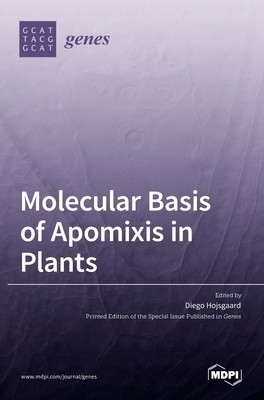
- We will send in 10–14 business days.
- Publisher: MDPI AG
- Year: 2021
- Pages: 300
- ISBN-10: 3036515089
- ISBN-13: 9783036515083
- Format: 17 x 24.4 x 2.4 cm, hardcover
- Language: English
- SAVE -10% with code: EXTRA
Molecular Basis of Apomixis in Plants (e-book) (used book) | bookbook.eu
Reviews
Description
Apomixis is the consequence of a concerted mechanism that harnesses the sexual machinery and coordinates developmental steps in the ovule to produce an asexual (clonal) seed. Altered sexual developments involve widely characterized functional and anatomical changes in meiosis, gametogenesis, and embryo and endosperm formation. The ovules of apomictic plants skip meiosis and form unreduced female gametophytes whose egg cells develop into a parthenogenetic embryo, and the central cells may or may not fuse to a sperm to develop the seed endosperm. Thus, functional apomixis involves at least three components, apomeiosis, parthenogenesis, and endosperm development, modified from sexual reproduction that must be coordinated at the molecular level to progress through the developmental steps and form a clonal seed.
Despite recent progress uncovering specific genes related to apomixis-like phenotypes and the formation of clonal seeds, the molecular basis and regulatory
network of apomixis is still unknown. This is a central problem underlying the current limitations of apomixis breeding.
This book collates twelve publications addressing different topics around the molecular basis of apomixis, illustrating recent discoveries and advances toward understanding the genetic regulation of the trait, discussing the possible origins of apomixis and the remaining challenges for its commercial deployment in plants.
EXTRA 10 % discount with code: EXTRA
The promotion ends in 18d.04:49:35
The discount code is valid when purchasing from 10 €. Discounts do not stack.
- Publisher: MDPI AG
- Year: 2021
- Pages: 300
- ISBN-10: 3036515089
- ISBN-13: 9783036515083
- Format: 17 x 24.4 x 2.4 cm, hardcover
- Language: English English
Apomixis is the consequence of a concerted mechanism that harnesses the sexual machinery and coordinates developmental steps in the ovule to produce an asexual (clonal) seed. Altered sexual developments involve widely characterized functional and anatomical changes in meiosis, gametogenesis, and embryo and endosperm formation. The ovules of apomictic plants skip meiosis and form unreduced female gametophytes whose egg cells develop into a parthenogenetic embryo, and the central cells may or may not fuse to a sperm to develop the seed endosperm. Thus, functional apomixis involves at least three components, apomeiosis, parthenogenesis, and endosperm development, modified from sexual reproduction that must be coordinated at the molecular level to progress through the developmental steps and form a clonal seed.
Despite recent progress uncovering specific genes related to apomixis-like phenotypes and the formation of clonal seeds, the molecular basis and regulatory
network of apomixis is still unknown. This is a central problem underlying the current limitations of apomixis breeding.
This book collates twelve publications addressing different topics around the molecular basis of apomixis, illustrating recent discoveries and advances toward understanding the genetic regulation of the trait, discussing the possible origins of apomixis and the remaining challenges for its commercial deployment in plants.


Reviews